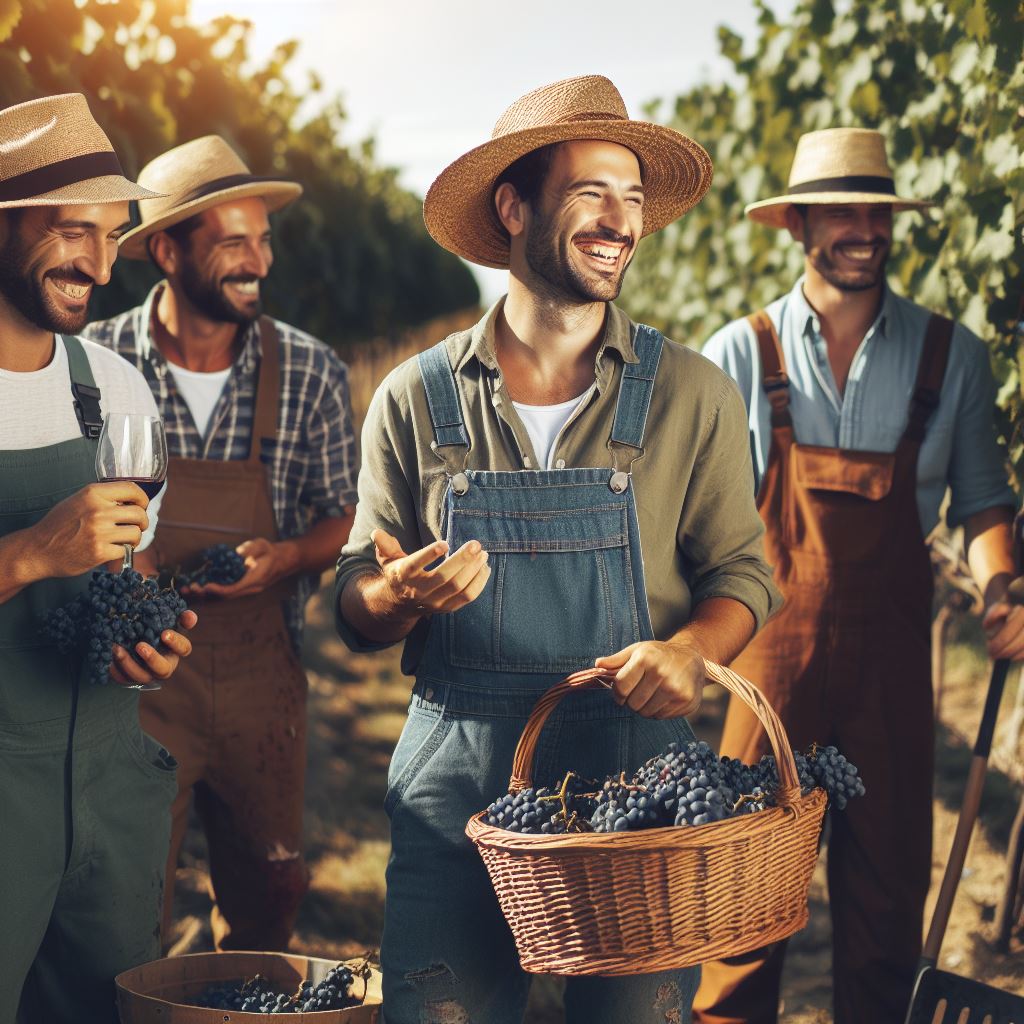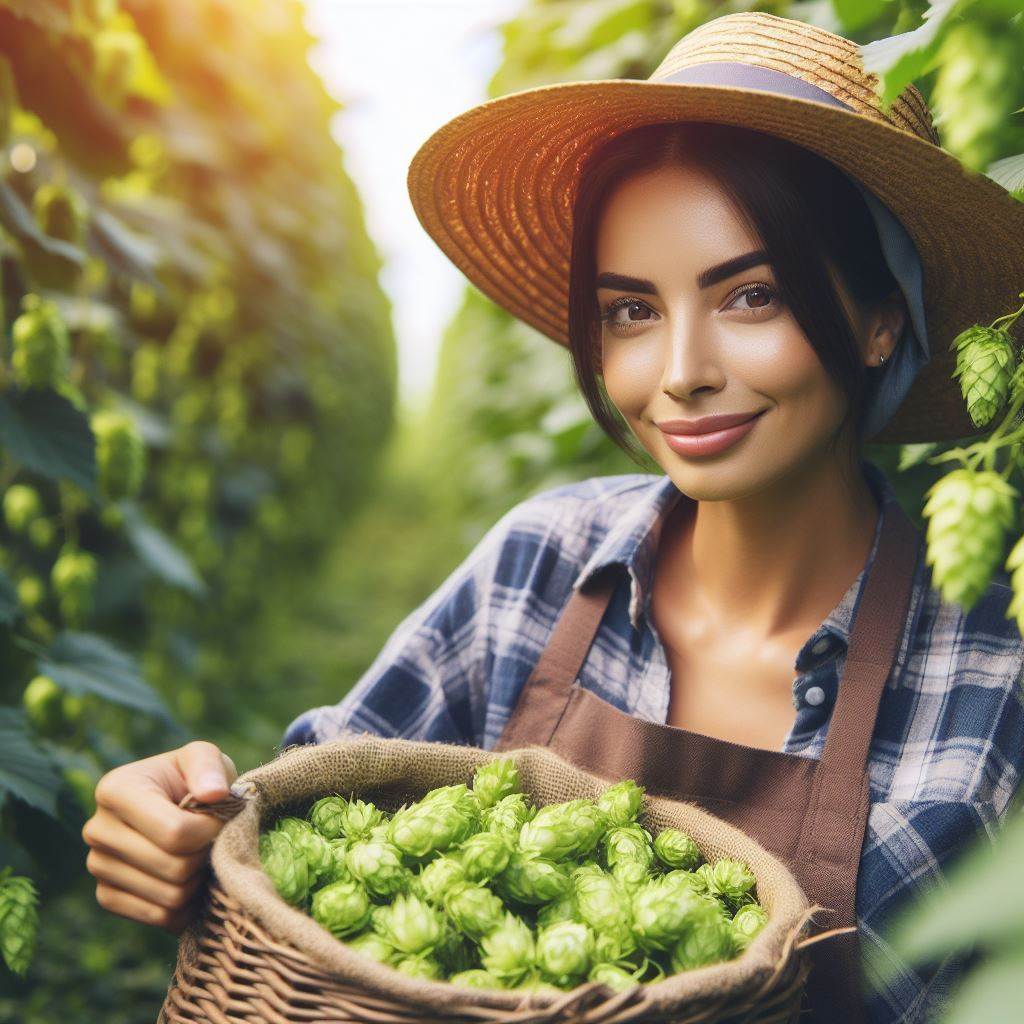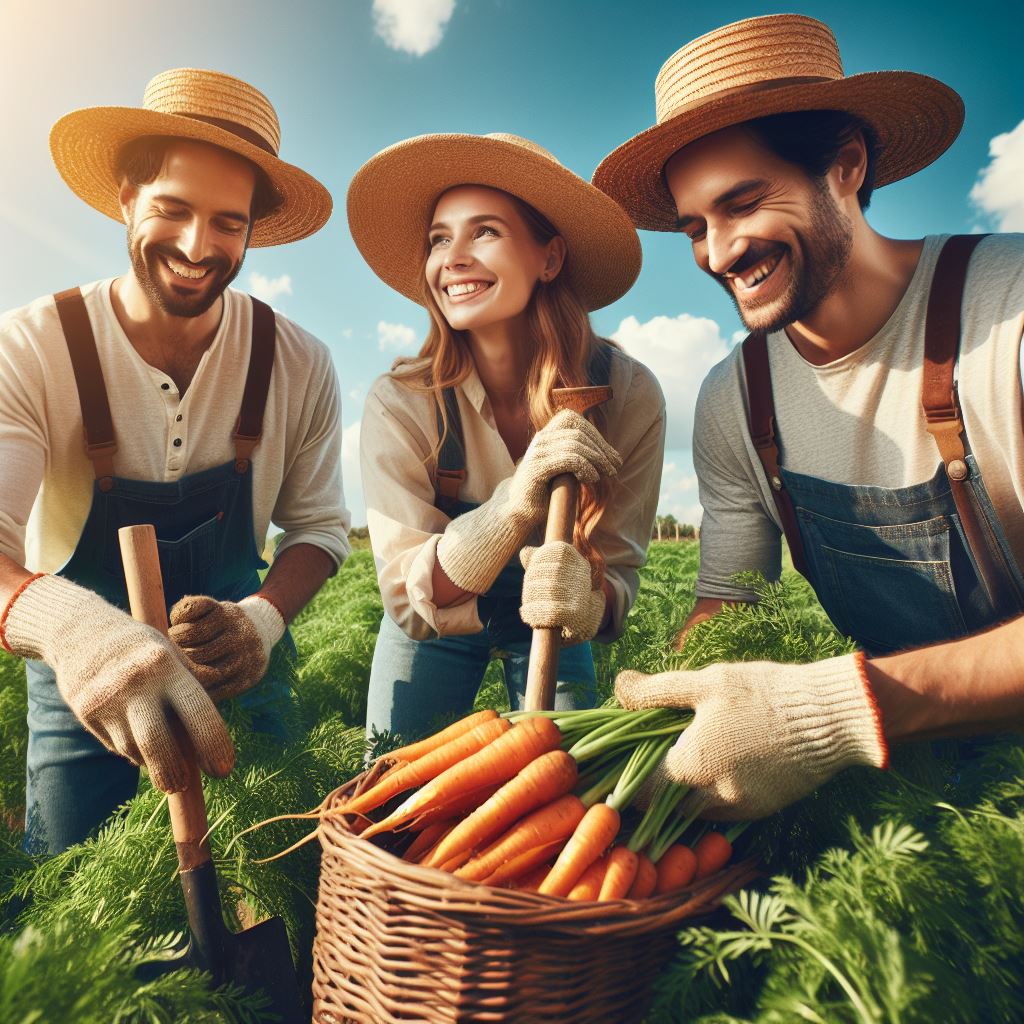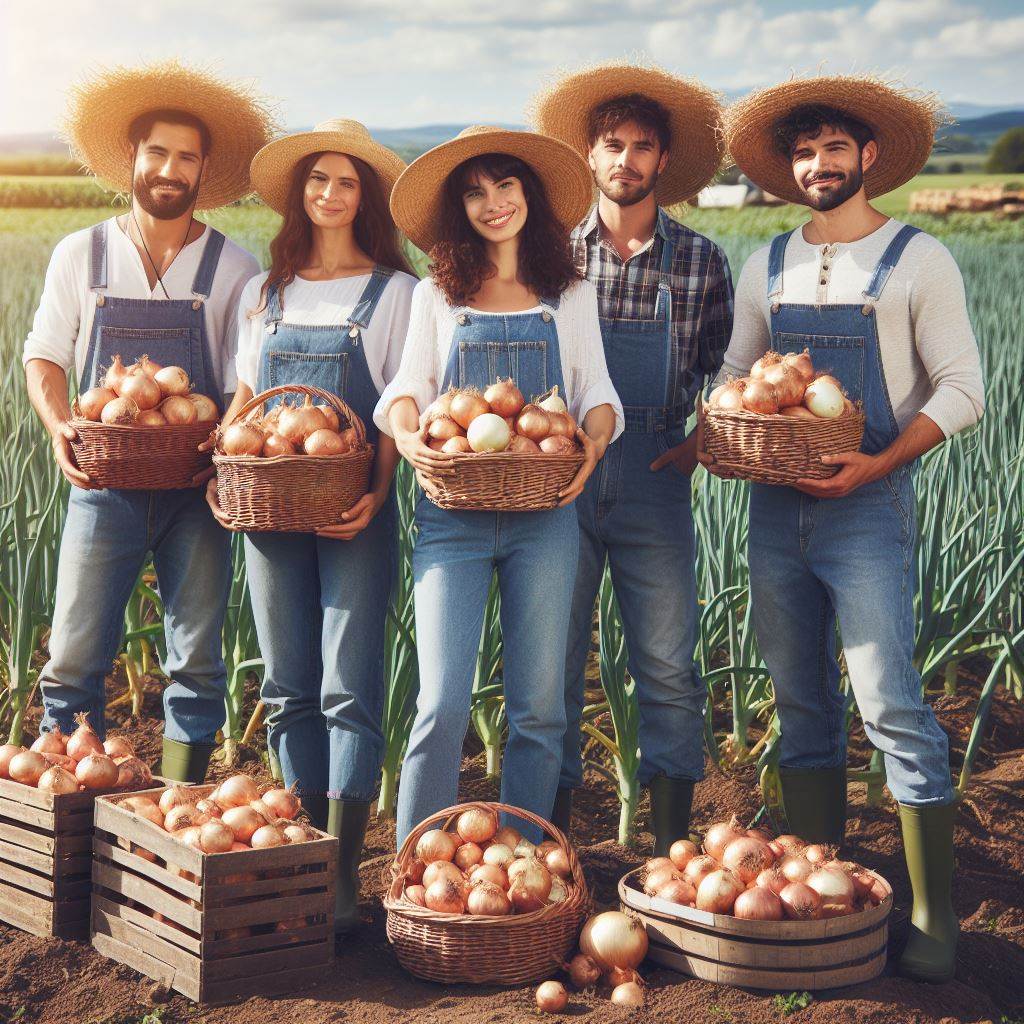Introduction
The topic of grape harvesting for winemaking
Grape harvesting for winemaking is a crucial process that determines the quality of the final product. The sweetness, acidity, and ripeness of the grapes significantly impact the flavor and aroma of the wine.
But how do winemakers ensure they pick the perfect grapes at the right time? Let’s dive into the fascinating world of grape harvesting.
Throughout the centuries, winemakers have mastered the art of grape harvesting. They have fine-tuned their senses to determine the optimal moment to pick the grapes, when the sugar levels are just right, and acidity is balanced.
This delicate balance ensures the grapes possess the right components to create exceptional wines.
Importance of grape quality in winemaking
Grape quality is paramount in winemaking. By harvesting only the best grapes, winemakers can produce wines that showcase the unique characteristics of the vineyard and express the terroir.
The flavors, aromas, and complexity of the wine originate from the grapes themselves, making the harvesting process pivotal.
Hook to capture reader’s attention
To capture the reader’s attention, picture this: rows of lush green grapevines basking under the warm sun, tempting us with the promise of exquisite wines.
As winemakers, we chase after that alluring combination of flavors and aromas that can only come from perfectly harvested grapes.
Winemakers use various techniques to evaluate grape quality, such as analyzing sugar levels, tasting the grapes for ripeness and flavor, and monitoring acidity levels.
These measurements guide them in determining the optimum period for harvesting, which can vary depending on grape variety, climate, and winemaker’s preferences.
In summary, grape harvesting for winemaking is a captivating process that requires skill, experience, and attention to detail. The quality of the grapes directly impacts the quality of the wine.
Join us as we delve deeper into the techniques and challenges faced during this exciting journey.
The Importance of Timing
The timing of grape harvest directly affects the quality of wine produced.
Grape ripeness plays a crucial role in defining the flavor and aroma profile of the wine.
Various methods are employed to determine the optimal time for grape harvesting.
Transform Your Agribusiness
Unlock your farm's potential with expert advice tailored to your needs. Get actionable steps that drive real results.
Get StartedImpact of Timing on Wine Quality
The timing of grape harvest is of paramount importance when it comes to producing high-quality wine.
Harvesting grapes at the right moment ensures that the fruit expresses its optimal flavor and aroma.
With precise timing, winemakers can achieve the perfect balance of sugars, acids, and phenolic compounds, resulting in well-rounded and complex wines.
Harvesting grapes too early may lead to under-ripe flavors and excessive acidity, while harvesting too late can result in overripe flavors and a loss of acidity.
Both scenarios can significantly affect the quality and balance of the wine, impacting its overall appeal to consumers.
Grape Ripeness and Flavor/Aroma Impact
Grape ripeness is a crucial factor in determining the flavor and aroma profile of wine.
As grapes ripen, their sugar levels increase while acidity decreases, leading to changes in the composition of the fruit.
These changes directly influence the resulting wine’s taste, aroma, and mouthfeel.
Ripe grapes tend to exhibit sweeter flavors, with hints of fruitiness and complexity.
The balance between sugar and acidity ensures a harmonious taste, while the concentration of aromatic compounds contributes to the wine’s bouquet
Methods to Determine Optimal Harvest Time
Winemakers employ various methods to determine the ideal time for grape harvesting,
ensuring optimal ripeness and flavor development. These methods include:
- Visual observation: Inspecting grape color, which changes from green to more transparent or translucent, indicating ripening.
- Seed analysis: Observing the color of seeds, with brown seeds indicating ripeness.
- Brix measurement: Measuring the sugar content in grape juice using a refractometer.
- pH and titratable acidity tests: Assessing the acidity levels in grape juice to determine the optimal balance.
- Taste tests: Sampling grapes to evaluate flavor development, ensuring desired characteristics.
- Chemical analysis: Conducting lab tests to measure phenolic compounds and specific gravity.
By combining these methods, winemakers can accurately determine the precise moment for grape harvesting, minimizing the risk of under-ripe or overripe flavors and ensuring the creation of exceptional wines.
Read: Herb Harvesting: Preserving Flavor & Freshness
Manual vs. Mechanical Harvesting
Difference between manual and mechanical harvesting
Manual harvesting involves handpicking grapes from vineyards, while mechanical harvesting uses machines to collect grapes.
Advantages and disadvantages of each method
Manual Harvesting
Advantages
Allows for selective picking, ensuring only ripe grapes are harvested.
Preserves grape quality as there is minimal damage to the fruit.
Ideal for vineyards with steep terrains or delicate grape varieties.
Disadvantages
Labor-intensive and time-consuming, requiring a large workforce.
Expensive due to increased labor costs.
Limited to small-scale operations due to the need for manual labor.
Mechanical Harvesting
Advantages
Cost-effective as machines can harvest grapes quickly, reducing labor expenses.
Efficient for large vineyards, covering substantial areas in a short amount of time.
Suited for grape varieties used in bulk wine production.
Disadvantages
Lack of selectivity may result in harvesting under-ripe or damaged grapes.
Mechanical harvesters can damage grape clusters and vines.
Unsuitable for steep or irregular terrains where machines cannot operate
Grape varieties are typically hand-harvested or machine-harvested
Hand-Harvested Grape Varieties
- Pinot Noir: This delicate red grape variety requires gentle handling during picking to preserve its quality.
- Riesling: The aromatic nature of Riesling grapes necessitates hand-harvesting to avoid damaging the berries.
- Gewürztraminer: This aromatic white grape variety is hand-harvested to ensure the intact clusters reach the winery.
Machine-Harvested Grape Varieties
- Chardonnay: As a widely planted white grape, Chardonnay benefits from mechanical harvesting for larger-scale production.
- Cabernet Sauvignon: These robust red grapes are well-suited for machine harvesting, especially in warmer regions.
- Merlot: Machine harvesting is often chosen for Merlot grapes, which are commonly used in blending.
Overall, the choice between manual and mechanical harvesting depends on various factors such as grape variety, vineyard size, terrain, and desired wine style.
While manual harvesting offers precision and quality control, mechanical harvesting provides efficiency and cost-effectiveness for larger-scale operations.
Winemakers need to carefully evaluate their specific circumstances to decide which method suits their vineyard and wine production goals.
Read: Orchard Fruit Storage: Best Practices

Grape Harvesting Techniques
Hand-Harvesting Grapes
- Hand-harvesting grapes involves laborers carefully picking the fruit by hand, ensuring quality control.
- The tools used for hand-harvesting include shears, buckets, and bins to collect the grapes.
- Hand-harvesting allows for selective picking of grapes, ensuring only the best quality grapes are harvested.
- This technique allows for the separation of damaged or unripe grapes, improving overall wine quality.
- Additionally, hand-harvesting can prevent bruising of the grapes, maintaining their integrity throughout the process.
Mechanical Grape Harvesting
- Mechanical grape harvesting involves the use of specialized machinery, such as grape harvesters and sorters.
- These machines have conveyor belts and shakers that detach the grapes from the vines.
- Mechanized harvesters can process large amounts of grapes quickly, increasing efficiency.
- They are equipped with vibrating panels that remove leaves and other debris from the harvested grapes.
- Mechanical harvesting is particularly beneficial in vineyards with large areas and a high grape volume to be harvested.
Careful Handling during Grape Harvesting
- Regardless of the harvesting technique, careful handling of the grapes is crucial to preserve their quality.
- The harvested grapes should be transported in well-ventilated containers to prevent spoilage.
- Gentle handling minimizes damage to the grapes, preserving their flavors and aromas.
- Avoiding excessive squeezing or piling up of grapes ensures that they remain intact and free from oxidation.
- Quick transportation of the harvested grapes to the winery is essential to maintain their freshness and prevent deterioration.
By utilizing either hand-harvesting or mechanical harvesting techniques and paying strict attention to careful handling, winemakers can ensure the best possible grape quality for winemaking.
Read: Rice Harvesting Secrets: Improve Yield
Find Out More: Permaculture Principles for Climate Change
Sorting and Preliminary Processing
Sorting and preliminary processing are crucial steps in grape harvesting for winemaking. These steps ensure that only the highest quality grapes are used in the production process.
There are different sorting methods used, including manual and mechanical, each with their own benefits and drawbacks. Additionally, preliminary processing steps such as destemming and crushing are necessary to prepare the grapes for fermentation.
Let’s explore these aspects in more detail.
Importance of Sorting Harvested Grapes
Sorting harvested grapes is vital as it allows winemakers to select only the grapes that meet their quality standards. This process removes damaged or unripe grapes, leaves, and any other unwanted materials.
By sorting the grapes, winemakers can ensure that only the best grapes are used for winemaking, improving the overall quality of the final product.
Showcase Your Farming Business
Publish your professional farming services profile on our blog for a one-time fee of $200 and reach a dedicated audience of farmers and agribusiness owners.
Publish Your ProfileDifferent Sorting Methods
Manual Sorting
Manual sorting involves handpicking individual grapes or clusters and inspecting them visually.
This method allows for precise selection and is commonly used for high-end wines where quality is paramount.
It is a time-consuming process and requires a skilled workforce.
Mechanical Sorting
Mechanical sorting utilizes machines to separate grapes based on size, weight, or optical sensors.
These sorting machines can quickly process large quantities of grapes, increasing efficiency.
However, they may not be as precise as manual sorting and can miss certain defects.
Preliminary Processing Steps
Destemming:
Destemming is the process of removing the grape stems before fermentation.
This step helps eliminate potential bitterness that can be imparted by the stems.
It can be done manually or by using mechanical destemmers.
Crushing
Crushing involves breaking the grape skins and releasing the juice inside.
Traditionally, this was done by stomping on the grapes, but modern wineries use mechanical crushers.
Crushing is an essential step for red wines as it allows for better extraction of color and flavor compounds from the skins.
Cold Soaking
Cold soaking is an optional step where the grape must is kept at a low temperature for a period.
This process helps enhance color extraction and flavor development.
It is often used for red wines to optimize the extraction of desirable compounds.
Sulphur Dioxide (SO2) Addition
Many winemakers add a small amount of SO2 to the grapes or must as a preservative.
This helps inhibit the growth of undesirable microorganisms and prevents oxidation.
However, the addition of SO2 should be carefully controlled to avoid negative impacts on wine quality.
In fact, sorting harvested grapes and undertaking preliminary processing steps are fundamental in grape harvesting for winemaking.
Manual and mechanical sorting methods offer different advantages, and preliminary processing steps ensure the grapes are prepared for fermentation.
These processes contribute to the production of high-quality wines that showcase the true potential of the grapes used.
Read: Soil Health: Boosting Crop Quality & Yield
Conclusion
Summary of the key points discussed in the blog post
Throughout this blog post, we have explored the process of grape harvesting for winemaking. From understanding the right time to harvest to the importance of handpicking, we have covered the essential aspects of this crucial step in winemaking.
Emphasis the significance of grape harvesting in winemaking
Grape harvesting plays a pivotal role in determining the quality and flavor profile of the final wine product. It sets the foundation for the winemaking process and greatly influences the taste and characteristics of the wine.
Encouragement to appreciate the effort that goes into producing quality wine grapes
As wine enthusiasts, it is important to recognize the hard work and dedication that goes into cultivating and harvesting quality wine grapes.
The labor-intensive nature of this process highlights the passion and commitment of winemakers in bringing us exceptional wines.
In the end, grape harvesting is a crucial step in winemaking, and its significance cannot be overstated. The careful selection and timing of the harvest, along with the manual labor involved, contribute to the creation of remarkable wines.
Let us take a moment to appreciate the efforts of winemakers in producing the exceptional flavors that we enjoy. Cheers to the art of grape harvesting and the delightful world of winemaking!




